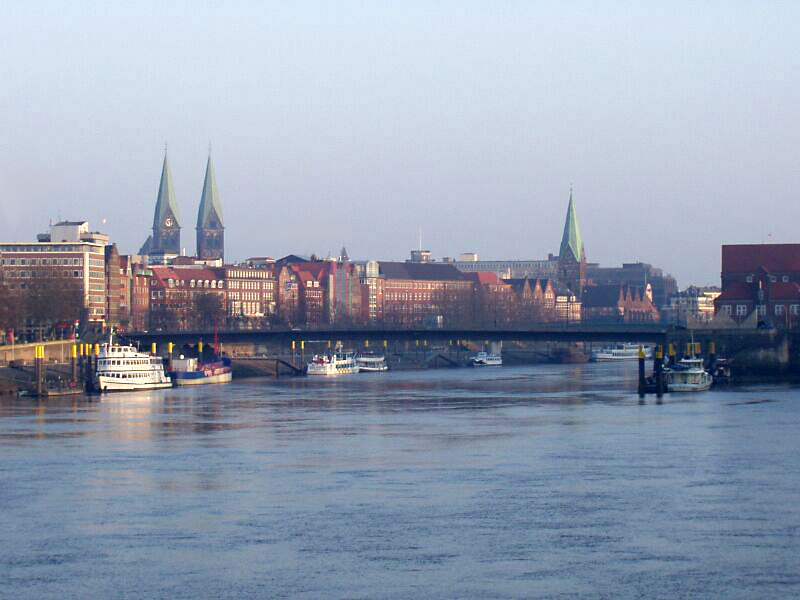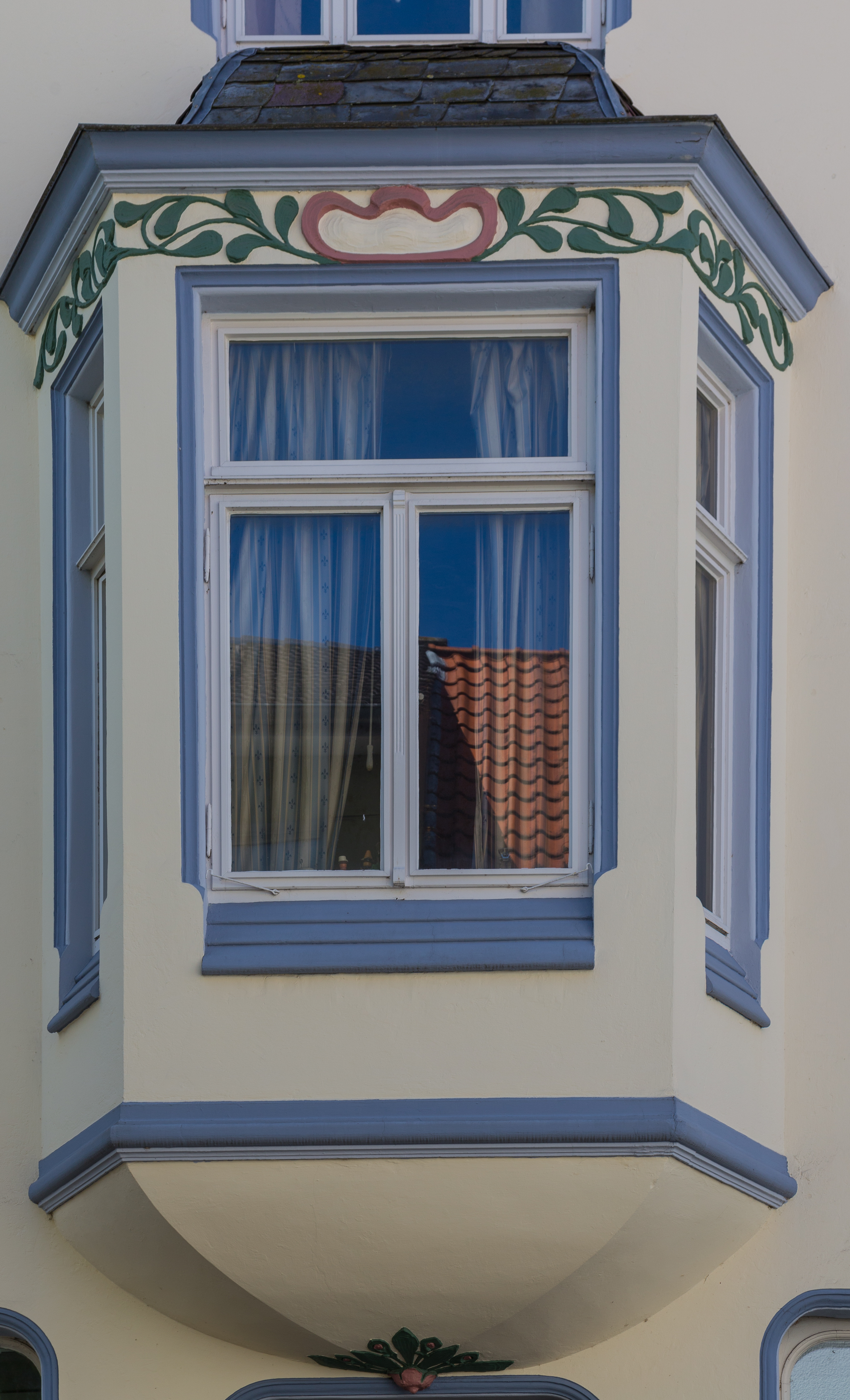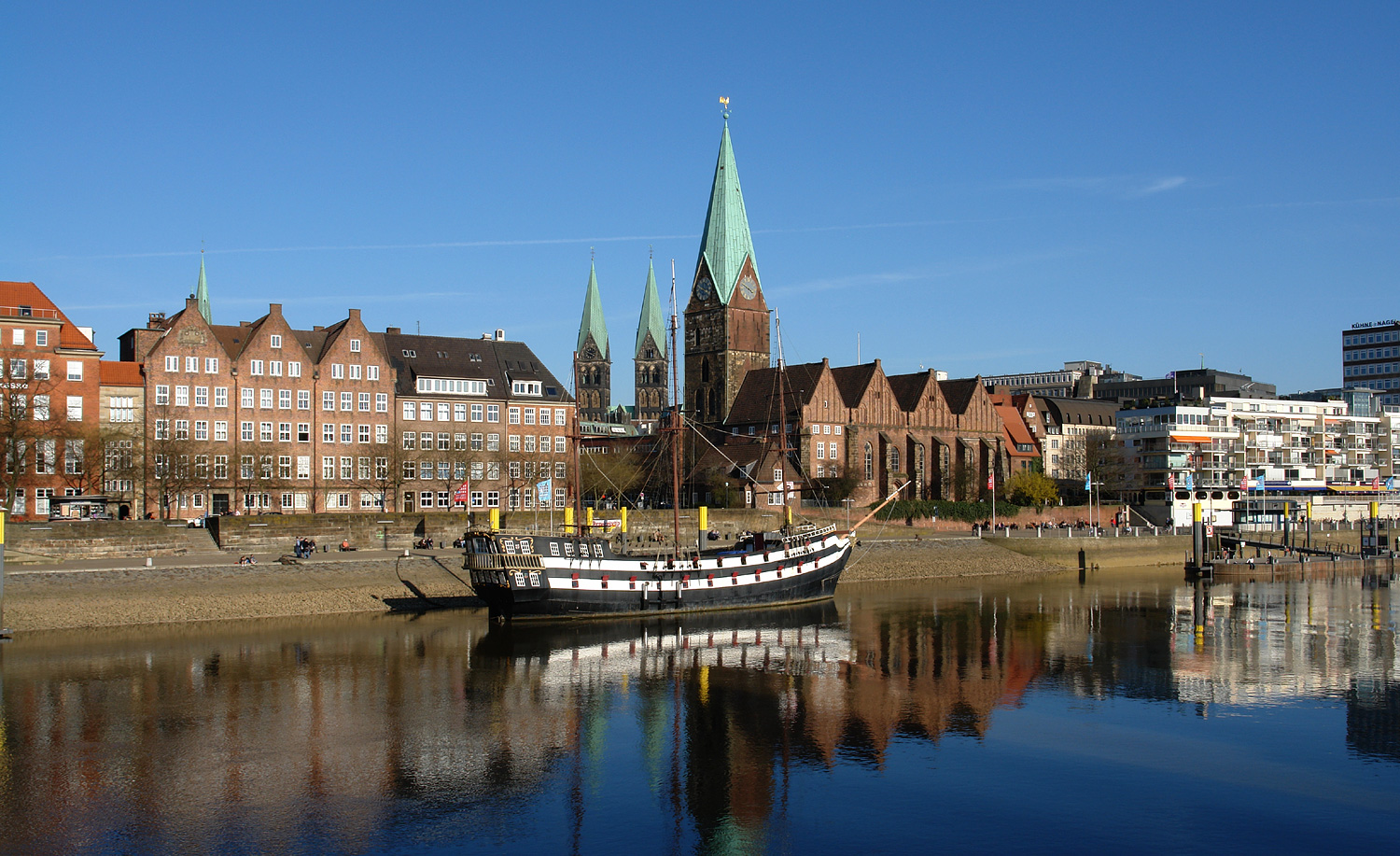|
Essighaus
The Essighaus was an impressive gabled town house in the old town of Bremen in northern Germany. One of the city's finest examples of Renaissance architecture, it was almost completely destroyed by bombing in 1943. The entrance flanked by projecting bay windows is the only part of the building which has been restored. History The house was built in 1618 in the ornate Renaissance style. With its richly decorated facade and interior, it was known well beyond the bounds of the city. Located on Langenstraße in the city's Schlachte district, the building takes its name from a vinegar factory (German ''Essig'' means vinegar) on the property at the beginning of the 19th century, but it may also be a corruption of Esich-Haus, as the Esich family originally lived there. Combining living quarters, an office and a shop, it was typical of Bremen's old merchants' houses. In 1897, a wine bar called the "Alt-Bremer Haus" opened on the premises. The Bremen branch of the East Asian Company was ... [...More Info...] [...Related Items...] OR: [Wikipedia] [Google] [Baidu] |
Langenstraße (Bremen)
The Langenstraße is a historical street in the old town of Bremen in the north of Germany. First mentioned in 1234, it is one of Bremen's oldest streets and one of the most important for the city's merchants. It no doubt originated at the time when the first settlements grew up on the north bank of the Balge. It runs west from the Marktplatz parallel to the River Weser over Bürgermeister-Smidt-Straße to Geeren. Many of the street's historic buildings were seriously damaged during aerial bombings in the Second World War but were carefully reconstructed in the postwar period. Landmarks There are many historic buildings along the road, many of them listed. On the corner of the market square, the Sparkasse am Markt is a gabled building reconstructed in 1958 by Eberhard Gildemeister who made use of a Baroque facade originally located at 31B, An der Schlachte. The facade was built by the stonemason Theophilus Wilhelm Frese in 1755 with bay windows, a wigged upper gable and Roco ... [...More Info...] [...Related Items...] OR: [Wikipedia] [Google] [Baidu] |
Bremen - Essighaus - Utluchten
Bremen (Low German also: ''Breem'' or ''Bräm''), officially the City Municipality of Bremen (, ), is the capital of the German state of the Free Hanseatic City of Bremen (), a two-city-state consisting of the cities of Bremen and Bremerhaven. With about 577,000 inhabitants, the Hanseatic city is the 11th-largest city of Germany and the second-largest city in Northern Germany after Hamburg. Bremen is the largest city on the River Weser, the longest river flowing entirely in Germany, lying some upstream from its mouth into the North Sea at Bremerhaven, and is completely surrounded by the state of Lower Saxony. Bremen is the centre of the Northwest Metropolitan Region, which also includes the cities of Oldenburg and Bremerhaven, and has a population of around 2.8 million people. Bremen is contiguous with the Lower Saxon towns of Delmenhorst, Stuhr, Achim, Weyhe, Schwanewede and Lilienthal. There is an exclave of Bremen in Bremerhaven, the "Citybremian Overseas Port Area Bremerhav ... [...More Info...] [...Related Items...] OR: [Wikipedia] [Google] [Baidu] |
Bremen
Bremen (Low German also: ''Breem'' or ''Bräm''), officially the City Municipality of Bremen (, ), is the capital of the States of Germany, German state of the Bremen (state), Free Hanseatic City of Bremen (), a two-city-state consisting of the cities of Bremen and Bremerhaven. With about 577,000 inhabitants, the Hanseatic League, Hanseatic city is the List of cities in Germany by population, 11th-largest city of Germany and the second-largest city in Northern Germany after Hamburg. Bremen is the largest city on the River Weser, the longest river flowing entirely in Germany, lying some upstream from its River mouth, mouth into the North Sea at Bremerhaven, and is completely surrounded by the state of Lower Saxony. Bremen is the centre of the Northwest Metropolitan Region, which also includes the cities of Oldenburg (city), Oldenburg and Bremerhaven, and has a population of around 2.8 million people. Bremen is contiguous with the Lower Saxon towns of Delmenhorst, Stuhr, Achim, Wey ... [...More Info...] [...Related Items...] OR: [Wikipedia] [Google] [Baidu] |
Renaissance Architecture
Renaissance architecture is the European architecture of the period between the early 15th and early 16th centuries in different regions, demonstrating a conscious revival and development of certain elements of Ancient Greece, ancient Greek and Ancient Rome, Roman thought and material culture. Stylistically, Renaissance architecture followed Gothic architecture and was succeeded by Baroque architecture and neoclassical architecture. Developed first in Florence, with Filippo Brunelleschi as one of its innovators, the Renaissance style quickly spread to other Italian cities. The style was carried to other parts of Europe at different dates and with varying degrees of impact. It began in Florence in the early 15th century and reflected a revival of classical Greek and Roman principles such as symmetry, proportion, and geometry. This movement was supported by wealthy patrons, including the Medici family and the Catholic Church, who commissioned works to display both religious devot ... [...More Info...] [...Related Items...] OR: [Wikipedia] [Google] [Baidu] |
Bombing Of Bremen In World War II
The Bombing of Bremen in World War II by the British Royal Air Force (RAF) and US Eighth Air Force involved both area bombing and, as capacity improved, more targeted raids upon the city's military-industrial facilities. These included the shipyards of Vulkan, AG Weser and Atlas Werke, the Valentin submarine pens, oil refineries and the aircraft works of Focke-Wulf. Early RAF raids on Bremen beginning in May 1940 had sought out these industrial and military targets but the efforts proved costly and, given limited navigation and target-location capabilities, impractical. From September 1941 the RAF switched to night-time "area bombing". In the spring of 1942 new directives from Bomber Command under Air Marshal Arthur Harris formalised the change of strategy. Drawing lessons from the German Blitz on Britain, Bomber Command concluded that rather than being "collateral damage", broader bombing raids which also destroyed residential districts served the legitimate purpose of w ... [...More Info...] [...Related Items...] OR: [Wikipedia] [Google] [Baidu] |
Bay Window
A bay window is a window space projecting outward from the main walls of a building and forming a bay in a room. A bow window is a form of bay with a curve rather than angular facets; an oriel window is a bay window that does not touch the ground. A window may be all three: projecting outward from the main fascia of a wall, curved in shape, and not reaching the ground. A bay window may be supported from the ground by a foundation, or in space by corbels, brackets, or cantilever. A typical bay window consists of a central windowpane, called a fixed sash, flanked by two or more smaller windows, known as casement or double-hung windows. The arrangement creates a panoramic view of the outside, allows more natural light to enter the room, and provides additional space within the room. Bay windows are often designed to extend beyond the exterior wall, either adding to floor space, often filled with a table, desk, or seating area, or turned into a window seat (often with storage o ... [...More Info...] [...Related Items...] OR: [Wikipedia] [Google] [Baidu] |
Schlachte
The Schlachte is a promenade along the east bank of the River Weser in the old town of Bremen in the north of Germany. Once one of the city's harbours, it is now popular for its restaurants, beer gardens and river boats. Etymology ''Schlachte'' is a Low German word for a river bank reinforced with wooden piles driven in by the action of hammering (cf. German ''eingeschlagenen''). The word ''slait'' was used as early as 1250 to refer to the river bank in Bremen. History In 1247, following authorisation from Archbishop Gerhard II, the area between St Martini's Church and Zweite Schlachtpforte (a street meaning "second quayside gate") was settled by local citizens and traders. In 1250, those privileged to operate water mills were required to maintain the wooden piles used to reinforce the river bank. In the 13th century, both the Schlachte and the Balge were used as harbours for wood (used as firewood) and limestone although the banks of the Balge soon became Bremen's main port. ... [...More Info...] [...Related Items...] OR: [Wikipedia] [Google] [Baidu] |
Sigmund Freud
Sigmund Freud ( ; ; born Sigismund Schlomo Freud; 6 May 1856 – 23 September 1939) was an Austrian neurologist and the founder of psychoanalysis, a clinical method for evaluating and treating psychopathology, pathologies seen as originating from conflicts in the Psyche (psychology), psyche, through dialogue between patient and psychoanalyst, and the distinctive theory of mind and human agency derived from it. Freud was born to Galician Jews, Galician Jewish parents in the Moravian town of Příbor, Freiberg, in the Austrian Empire. He qualified as a doctor of medicine in 1881 at the University of Vienna. Upon completing his habilitation in 1885, he was appointed a docent in neuropathology and became an affiliated professor in 1902. Freud lived and worked in Vienna having set up his clinical practice there in 1886. Following the Anschluss, German annexation of Austria in March 1938, Freud left Austria to escape Nazi persecution. He died in exile in the United Kingdom in 1939. In ... [...More Info...] [...Related Items...] OR: [Wikipedia] [Google] [Baidu] |
Carl Jung
Carl Gustav Jung ( ; ; 26 July 1875 – 6 June 1961) was a Swiss psychiatrist, psychotherapist, and psychologist who founded the school of analytical psychology. A prolific author of Carl Jung publications, over 20 books, illustrator, and correspondent, Jung was a complex and convoluted academic, best known for his concept of Jungian archetypes, archetypes. Alongside contemporaries Sigmund Freud, Freud and Alfred Adler, Adler, Jung became one of the most influential psychologists of the early 20th century and has fostered not only scholarship, but also popular interest. Jung's work has been influential in the fields of psychiatry, anthropology, archaeology, literature, philosophy, psychology, and religious studies. He worked as a research scientist at the Burghölzli psychiatric hospital in Zurich, under Eugen Bleuler. Jung established himself as an influential mind, developing a friendship with Sigmund Freud, founder of psychoanalysis, conducting a The Freud/Jung Letters, leng ... [...More Info...] [...Related Items...] OR: [Wikipedia] [Google] [Baidu] |
Buildings And Structures In Bremen (city)
A building or edifice is an enclosed structure with a roof, walls and windows, usually standing permanently in one place, such as a house or factory. Buildings come in a variety of sizes, shapes, and functions, and have been adapted throughout history for numerous factors, from building materials available, to weather conditions, land prices, ground conditions, specific uses, prestige, and aesthetic reasons. To better understand the concept, see ''Nonbuilding structure'' for contrast. Buildings serve several societal needs – occupancy, primarily as shelter from weather, security, living space, privacy, to store belongings, and to comfortably live and work. A building as a shelter represents a physical separation of the human habitat (a place of comfort and safety) from the ''outside'' (a place that may be harsh and harmful at times). buildings have been objects or canvasses of much artistic expression. In recent years, interest in sustainable planning and building practi ... [...More Info...] [...Related Items...] OR: [Wikipedia] [Google] [Baidu] |
Buildings And Structures Completed In 1618
A building or edifice is an enclosed structure with a roof A roof (: roofs or rooves) is the top covering of a building, including all materials and constructions necessary to support it on the walls of the building or on uprights, providing protection against rain, snow, sunlight, extremes of tempera ..., walls and window, windows, usually standing permanently in one place, such as a house or factory. Buildings come in a variety of sizes, shapes, and functions, and have been adapted throughout history for numerous factors, from building materials available, to weather conditions, land prices, ground conditions, specific uses, monument, prestige, and aesthetic reasons. To better understand the concept, see ''Nonbuilding structure'' for contrast. Buildings serve several societal needs – occupancy, primarily as shelter from weather, security, living space, privacy, to store belongings, and to comfortably live and work. A building as a shelter represents a physical separa ... [...More Info...] [...Related Items...] OR: [Wikipedia] [Google] [Baidu] |
Renaissance Architecture In Germany
The Renaissance ( , ) is a period of history and a European cultural movement covering the 15th and 16th centuries. It marked the transition from the Middle Ages to modernity and was characterized by an effort to revive and surpass the ideas and achievements of classical antiquity. Associated with great social change in most fields and disciplines, including art, architecture, politics, literature, exploration and science, the Renaissance was first centered in the Republic of Florence, then spread to the rest of Italy and later throughout Europe. The term ''rinascita'' ("rebirth") first appeared in ''Lives of the Artists'' () by Giorgio Vasari, while the corresponding French word was adopted into English as the term for this period during the 1830s. The Renaissance's intellectual basis was founded in its version of humanism, derived from the concept of Roman and the rediscovery of classical Greek philosophy, such as that of Protagoras, who said that "man is the measure of ... [...More Info...] [...Related Items...] OR: [Wikipedia] [Google] [Baidu] |











